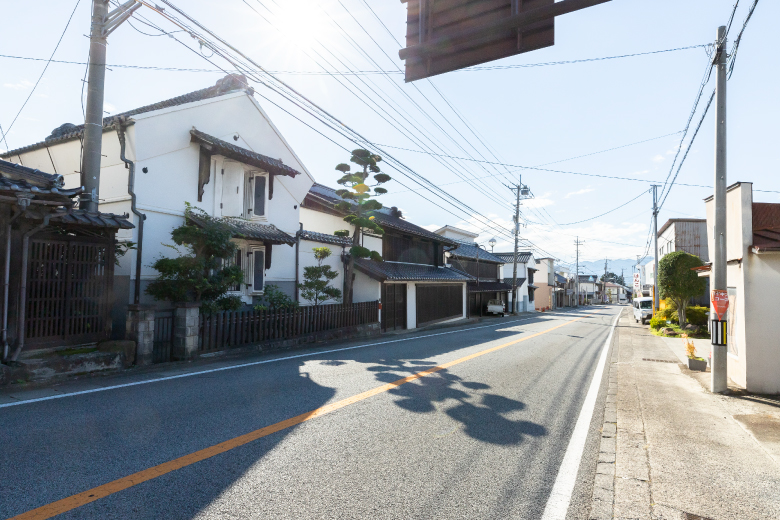The former Hagiwara Family Residence in Katsunuma-juku includes the main residence and storehouses built in the Edo Period (1603-1868) and Meiji Periods (1868-1912). It is one of a few sites remaining with an earthen path passing through from the front to the back door of the house, an accounting room, and a large reception room with tatami mats (kura zashiki) that are characteristic of post town architecture. In 2018, five structures, the building comprising the east store and main residence, west store, and east storehouse, were designated National Tangible Cultural Properties.
The main residence and west store are a two-story wooden structure with gable roofs, both of which were built during the late Edo Period between 1830 and 1868. The main residence is a large town-house has an accounting room as well as an earthen path passing through from the front to the back door of the residence, and features detailed latticework with evenly spaced vertical timber slats (senbon koshi) facing the street. The west store also has frontal lattice and other detailed structures. Both the main residence and west store retain the look of the former post town.
Built during the Meiji Period between 1883 and 1897, the east storehouse is a two-story earthen structure with a tile-roof. The second floor was used as storage, and the first floor has a large reception room with 12.5 tatami mats, a toilet and bath connected via a corridor. The large reception room equipped with toilet and bath is characteristic of large merchant houses.
The main residence and west store are a two-story wooden structure with gable roofs, both of which were built during the late Edo Period between 1830 and 1868. The main residence is a large town-house has an accounting room as well as an earthen path passing through from the front to the back door of the residence, and features detailed latticework with evenly spaced vertical timber slats (senbon koshi) facing the street. The west store also has frontal lattice and other detailed structures. Both the main residence and west store retain the look of the former post town.
Built during the Meiji Period between 1883 and 1897, the east storehouse is a two-story earthen structure with a tile-roof. The second floor was used as storage, and the first floor has a large reception room with 12.5 tatami mats, a toilet and bath connected via a corridor. The large reception room equipped with toilet and bath is characteristic of large merchant houses.
